Bali, a tropical island in Indonesia, is a popular tourist destination known for its stunning beaches, ancient temples, and lush landscapes. Over the years, Bali has also become a bird-watching paradise, attracting bird enthusiasts from around the world.
With its diverse habitat ranging from mangrove forests, rice paddies, and rainforests to mountain ranges, Bali offers a wide variety of bird species. From tiny flowerpeckers and sunbirds to majestic raptors and hornbills, Bali’s avian fauna is truly exceptional.
In this article, we will delve into the fascinating world of birds in Bali and discover why this island is a must-visit destination for bird lovers.
1. Chinese Sparrowhawk
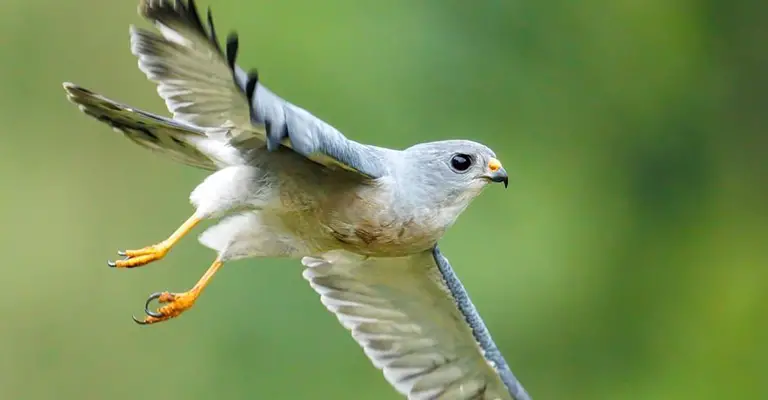
Chinese Sparrowhawk, known scientifically as Accipiter soloensis, frequents Bali’s skies. This raptor, vivid in its migratory habits, also boasts a strikingly slender build.
With their sharp talons, these hawks primarily hunt small birds. Migration season sees these sparrowhawks journey from East Asia, making pit stops in Bali.
Observing them in their natural habitat provides insights into their remarkable adaptability. These birds provide birdwatchers an enthralling spectacle during their seasonal visit.
Scientific classification:
| Kingdom | Animalia |
| Phylum | Chordata |
| Class | Aves |
| Order | Accipitriformes |
| Family | Accipitridae |
| Genus | Accipiter |
| Species | A. soloensis |
Also Featured In: Most Common Birds in China, Common Philippines Birds
2. Common Buttonquail
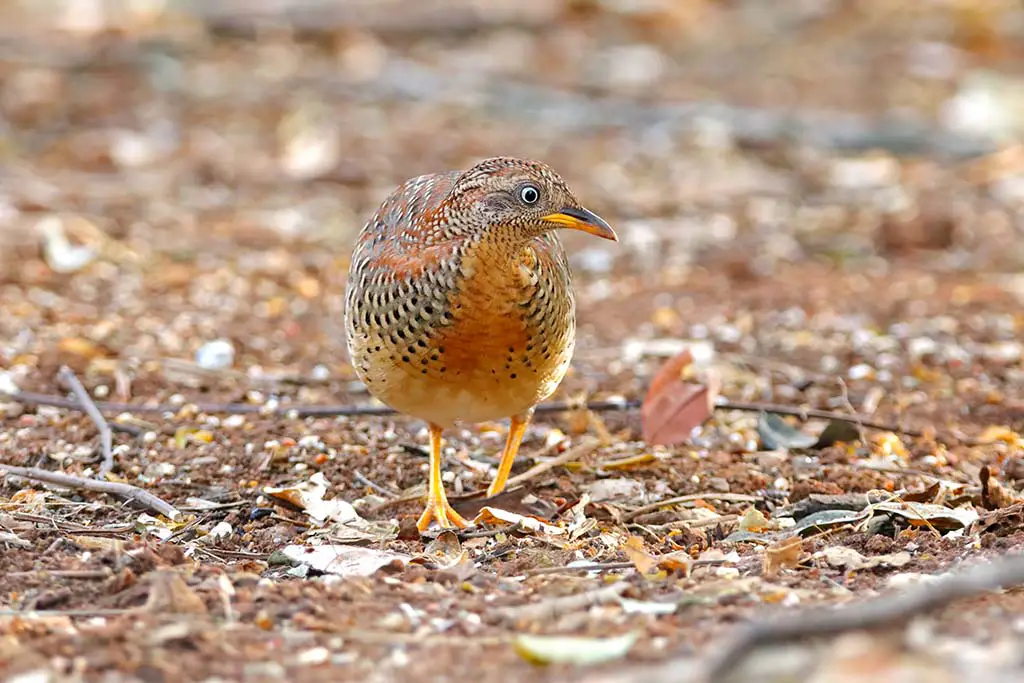
Common Buttonquails often go unnoticed in Bali. These birds, measuring about 15 cm (5.9 in), show streaky sandy brown upperparts.
Their buff underparts feature black flank markings. In flight, a white wingbar contrasts with grey wings, offering a distinctive view. Unlike many birds, they prefer running over flying, making sightings rare.
Scientific classification:
| Kingdom | Animalia |
| Phylum | Chordata |
| Class | Aves |
| Order | Charadriiformes |
| Family | Turnicidae |
| Genus | Turnix |
| Species | T. sylvaticus |
Also Featured In: Common Algerian Birds ,
3. Spotted Dove
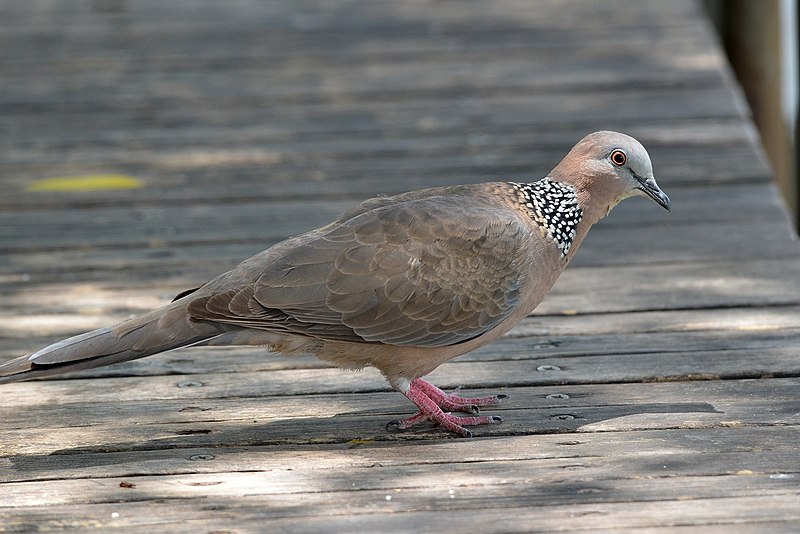
Spotted Doves frequent Bali’s suburban parks year-round, favoring warm climates. Their nests, crafted from sticks, host these medium-sized birds that measure 28–32 cm (11.2–12.8 inches).
With a rosy buff underbelly and grey head, they showcase a striking black and white half collar. Insects and seeds make up their diet, highlighting their adaptability in urban settings.
Their swift flight and distinctive appearance make them a notable sight in Bali’s birdwatching landscape.
Scientific classification:
| Kingdom | Animalia |
| Phylum | Chordata |
| Class | Aves |
| Order | Columbiformes |
| Family | Columbidae |
| Genus | Spilopelia |
| Species | S. chinensis |
Also Featured In: Common Birds in India, Hawaii Big Island Birds You Should Know
4. Cinnamon Bittern
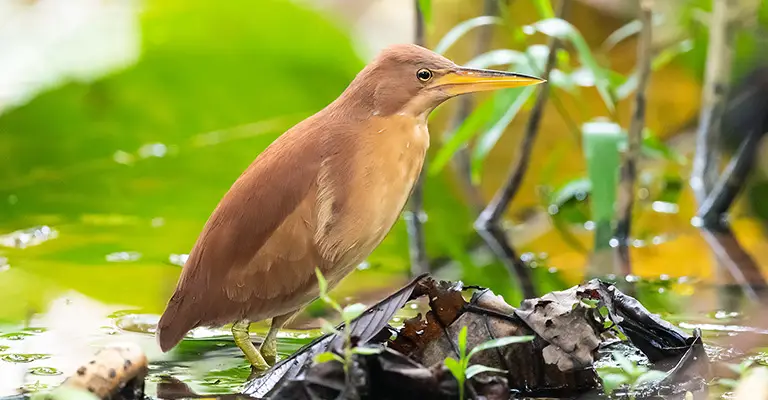
The Cinnamon Bittern, a small bittern reaching 38 cm (15 in) in length, is native to Bali. It features a short neck and a longish bill, with males showcasing a uniform cinnamon color above and buff below.
Females have brown backs and crowns, whereas juveniles display heavily streaked brown undersides. When alarmed, it adopts the “on-guard” posture, extending its neck vertically with its bill pointed skyward, blending seamlessly into the reeds.
Scientific classification:
| Kingdom | Animalia |
| Phylum | Chordata |
| Class | Aves |
| Order | Pelecaniformes |
| Family | Ardeidae |
| Genus | Ixobrychus |
| Species | I. cinnamomeus |
Also Featured In: Native Pakistani Birds, Common Birds that Live in Odisha
5. Oriental Magpie-Robin
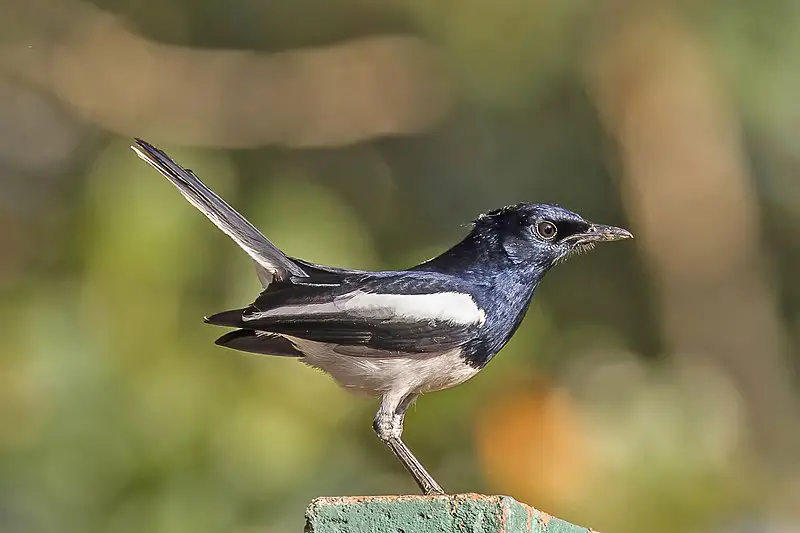
The Oriental Magpie-Robin, often observed in Bali, measures around 19 cm (7.5 in) including its distinctive long tail.
It resembles a larger European robin, with the male showcasing black upperparts contrasted by a striking white shoulder patch.
Males display white underparts, while females are a softer greyish black above and below. Young ones have unique scaly brown upperparts. This species contributes to Bali’s rich avian tapestry.
Scientific classification:
| Kingdom | Animalia |
| Phylum | Chordata |
| Class | Aves |
| Order | Passeriformes |
| Family | Muscicapidae |
| Genus | Copsychus |
| Species | C. saularis |
Also Featured In: Most Common Types of Bangladeshi Birds, Hong Kong Birds You Need to See
6. Blue-Eared Kingfisher
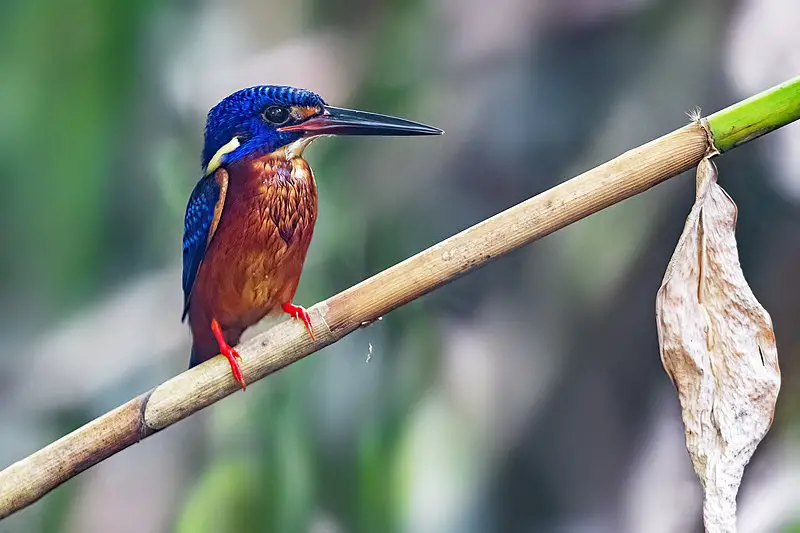
The Blue-Eared Kingfisher is a notable resident in Bali. Measuring 16 cm (6.3 in) in length, it features blue ear coverts and cobalt-blue upperparts.
This species exhibits richer rufous underparts compared to the common kingfisher. Observers often spot juveniles with rufous ear-coverts and mottling on the throat.
These characteristics fade as they mature. Their distinct coloring and size contribute significantly to Bali’s avian diversity.
Scientific classification:
| Kingdom | Animalia |
| Phylum | Chordata |
| Class | Aves |
| Order | Coraciiformes |
| Family | Alcedinidae |
| Subfamily | Alcedininae |
| Genus | Alcedo |
| Species | A. meninting |
7. White-Breasted Waterhen
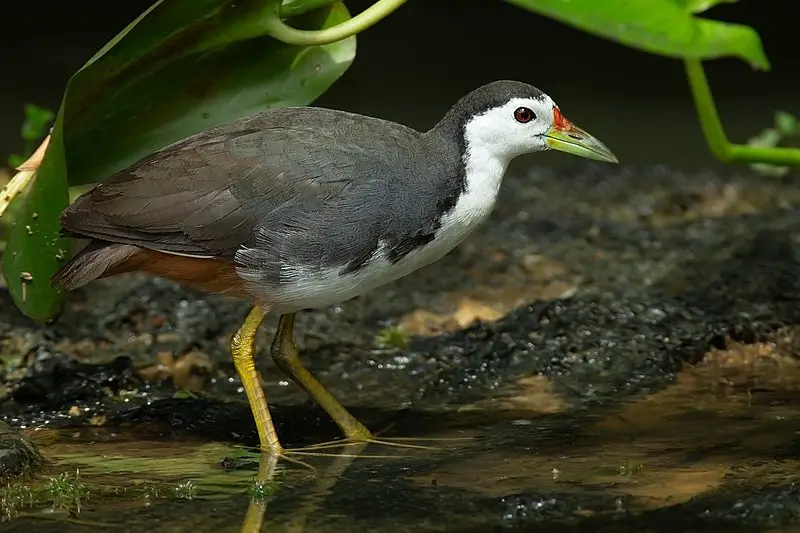
The White-Breasted Waterhen is a striking bird found in Bali. They display dark gray upperparts and flanks, contrasted by white face, neck, and breast.
Their lower belly and undertail reveal a cinnamon hue. Both sexes appear similar, though females are slightly smaller.
Their distinct flattened bodies assist in moving through dense reeds and undergrowth efficiently. Observers often spot them near wetlands and marshy areas.
Scientific classification:
| Kingdom | Animalia |
| Phylum | Chordata |
| Class | Aves |
| Order | Gruiformes |
| Family | Rallidae |
| Genus | Amaurornis |
| Species | A. phoenicurus |
Also Featured In: Common Birds in Kerala, Common Birds in Bangalore
8. Lineated Barbet
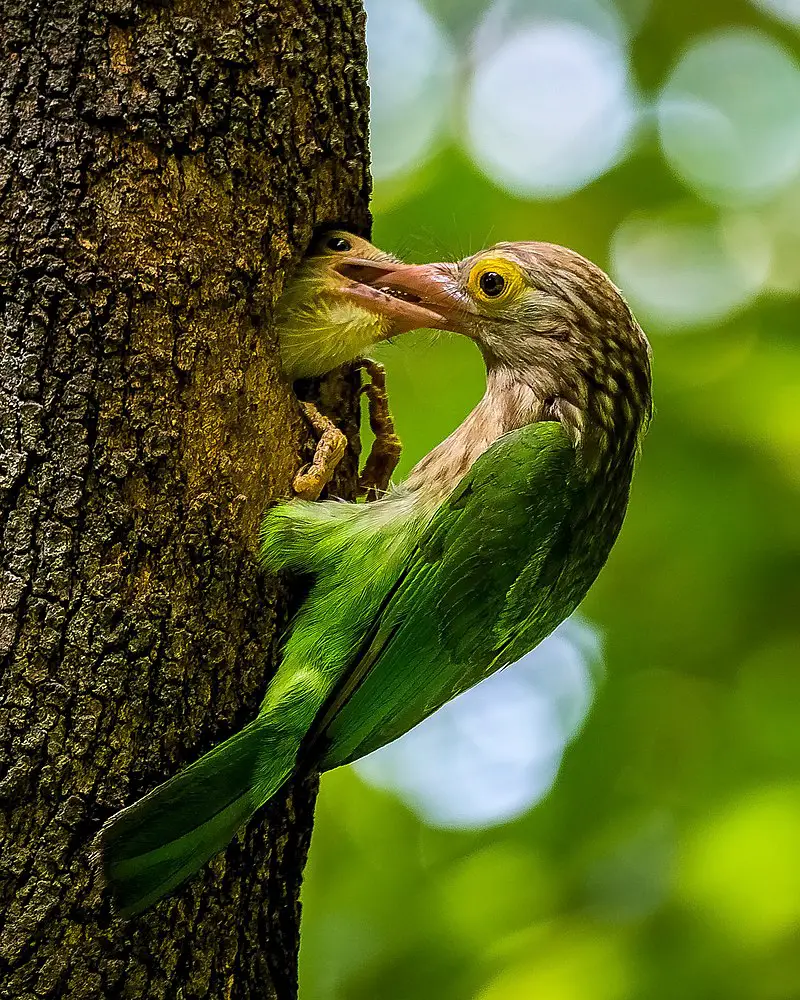
The Lineated Barbet, found across the Terai and Brahmaputra basin, is a common sight in Bali. This frugivore seamlessly blends into tree trunks, nesting within their cavities.
Its presence in Southeast Asia enhances Bali’s diverse bird population, attracting birdwatchers worldwide.
Known scientifically as Psilopogon lineatus, this bird contributes to the ecological vibrancy with its unique nesting habits and fruit-based diet.
Scientific classification:
| Kingdom | Animalia |
| Phylum | Chordata |
| Class | Aves |
| Order | Piciformes |
| Family | Megalaimidae |
| Genus | Psilopogon |
| Species | P. lineatus |
9. Lesser Adjutant
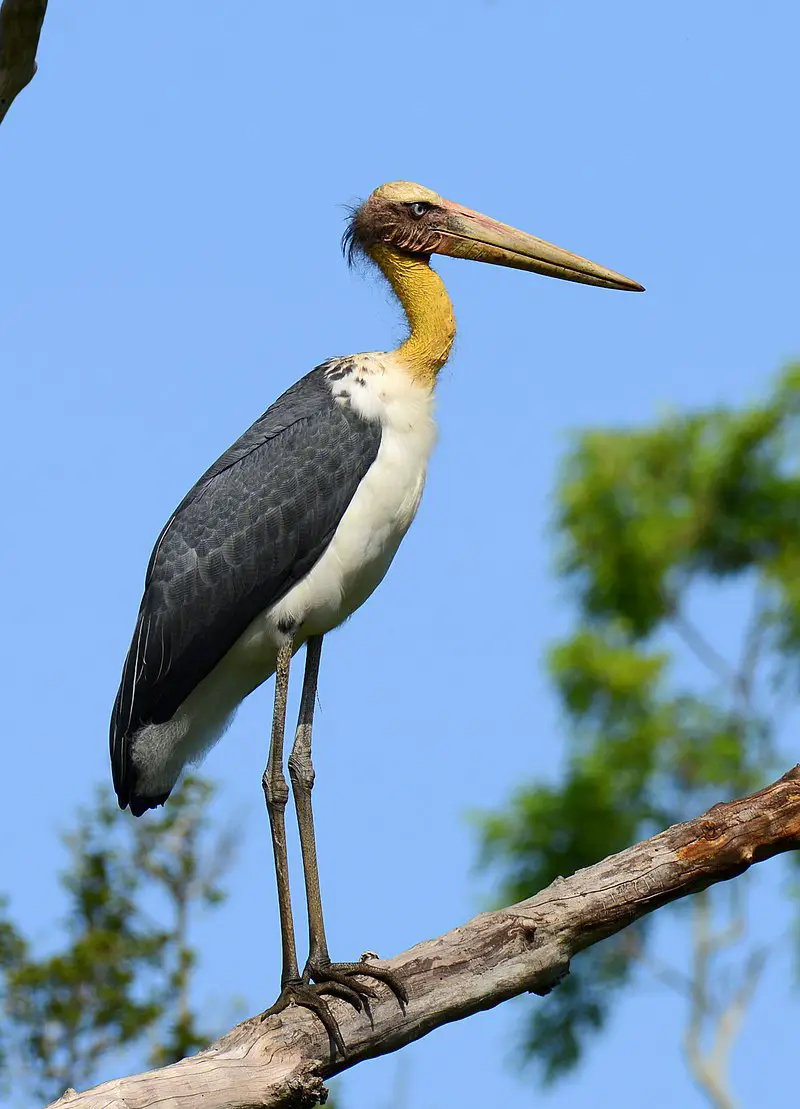
The Lesser Adjutant stands tall at 110-120 cm. It features a bare head and neck, with a length ranging from 87-93 cm and a weight of 4-5.71 kg.
Unique characteristics include dark upper plumage and a straight upper bill edge, measuring 25.8-30.8 cm. The breeding season reveals reddish and orange facial tones, adding to its distinct appearance in Bali’s avian realm.
Scientific classification:
| Kingdom | Animalia |
| Phylum | Chordata |
| Class | Aves |
| Order | Ciconiiformes |
| Family | Ciconiidae |
| Genus | Leptoptilos |
| Species | L. javanicus |
Also Featured In: Big Birds that Live in Singapore, Most Common Birds of Bihar
10. Yellow-Vented Bulbul
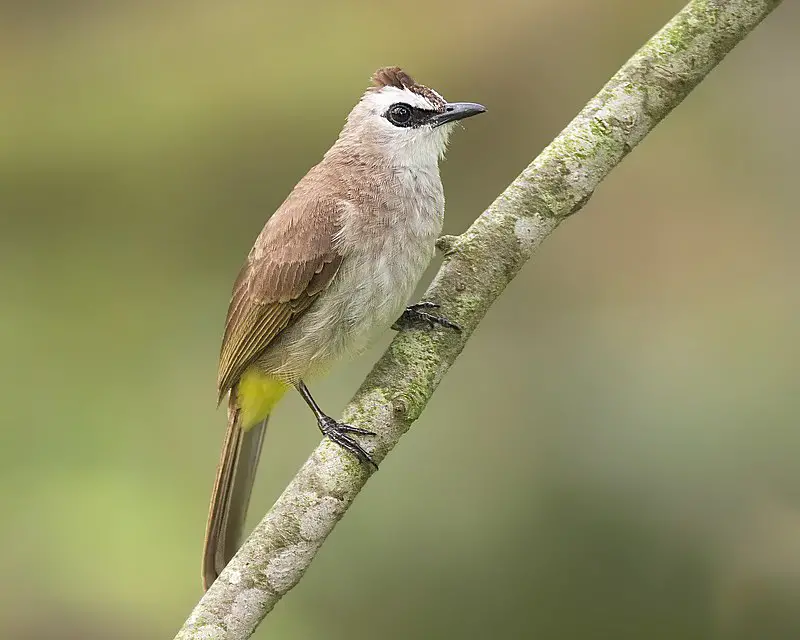
The Yellow-Vented Bulbul, or Pycnonotus goiavier, thrives in Bali. It inhabits open habitats, frequenting cultivated areas.
This bird displays nomadic behavior, roaming regularly. Despite avoiding deep forests, its adaptability ensures a prevalent presence. Recognizable by its yellow vent, it’s part of the diverse bulbul family, enriching Bali’s avian fauna.
Scientific classification:
| Kingdom | Animalia |
| Phylum | Chordata |
| Class | Aves |
| Order | Passeriformes |
| Family | Pycnonotidae |
| Genus | Pycnonotus |
| Species | P. goiavier |
Also Featured In: Birds of the Philippines, Native Birds Of Ko Chang District
11. Chestnut-Breasted Malkoha
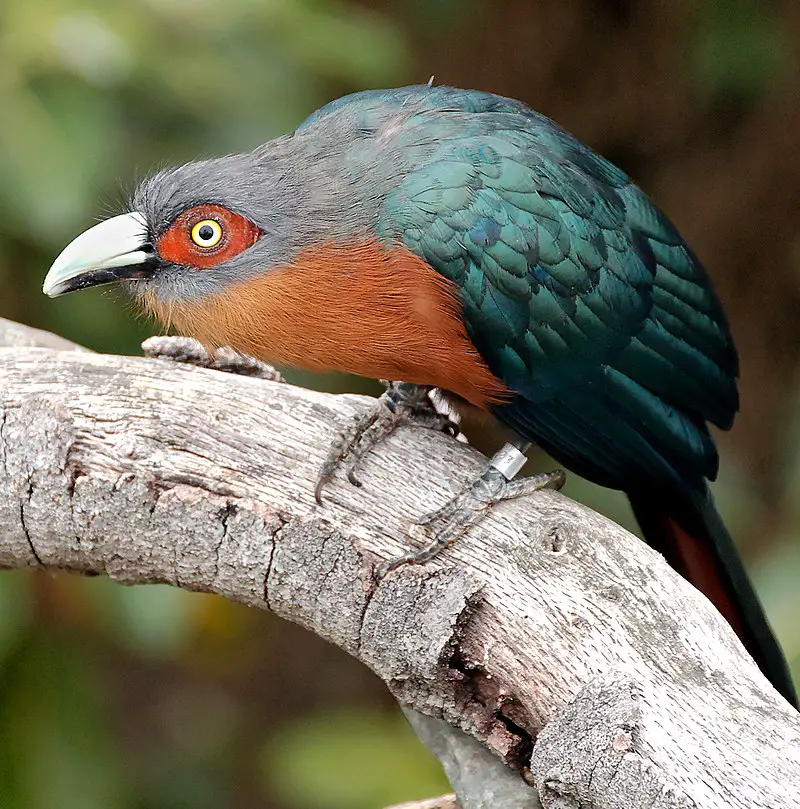
The Chestnut-Breasted Malkoha, found in Bali, measures 42-49 cm (17-19 in). Its large, curved, pale yellow upper mandible contrasts with a darker lower mandible.
The bird features a distinct red patch around the eye. It has dark green wings that fade to a blue hue with age. Rump and underparts display a chestnut color.
Males and females share similar plumage; males have a pale blue iris, while females have a yellow one.
Scientific classification:
| Kingdom | Animalia |
| Phylum | Chordata |
| Class | Aves |
| Order | Cuculiformes |
| Family | Cuculidae |
| Genus | Phaenicophaeus |
| Species | P. curvirostris |
12. Starling
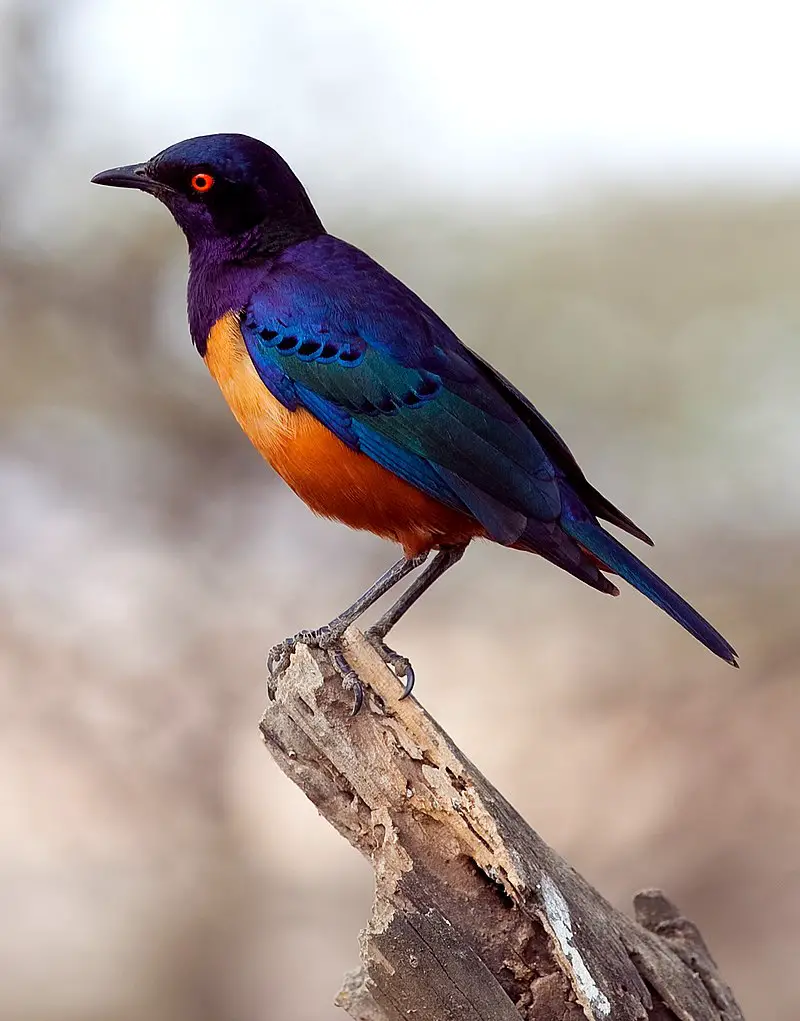
Bali harbors a unique population of Blackwinged Starlings, a species facing critical threats with less than 50 individuals remaining in the wild.
This species suffered an 80% population decline over the past decade due to illegal collection. Despite their dramatic decline, glimmers of hope persist as conservationists focus efforts on preserving their shrinking numbers within protected habitats.
Scientific classification:
| Kingdom | Animalia |
| Phylum | Chordata |
| Class | Aves |
| Order | Passeriformes |
| Suborder | Passeri |
| Family | Sturnidae Rafinesque, 1815 |
Also Featured In: Birds of United Kingdom, Most Common Winter Birds
13. Pin-Tailed Snipe
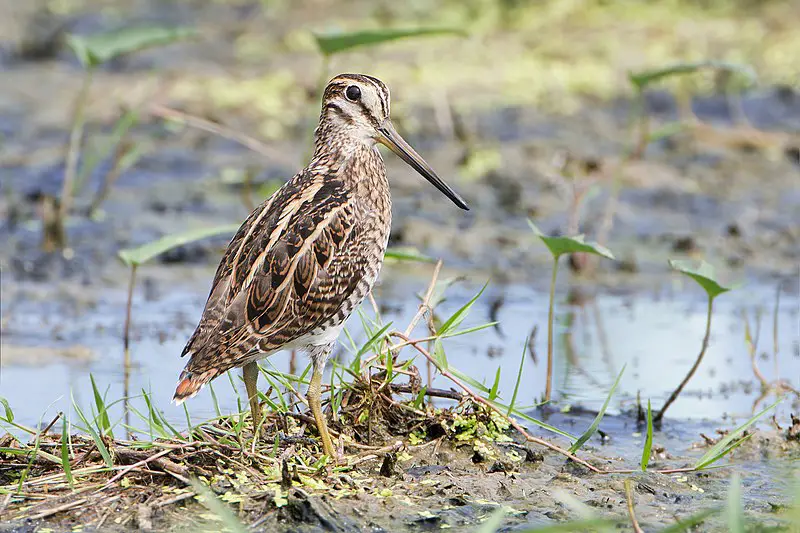
A standout among Bali’s birdlife is the Pin-Tailed Snipe, measuring 25-27 cm long. This bird, with mottled brown plumage, navigates its habitat with distinctive greenish-grey legs and a straight, dark bill.
Notably, they differ from the Common Snipe by their shorter tails and lack of a white trailing wing edge. Males frequently vocalize a repetitive tcheka song, adding to the island’s auditory tapestry.
Scientific classification:
| Kingdom | Animalia |
| Phylum | Chordata |
| Class | Aves |
| Order | Charadriiformes |
| Family | Scolopacidae |
| Genus | Gallinago |
| Species | G. stenura |
Also Featured In: Birds in Sri Lanka, Birds that Migrate in United Arab Emirates
14. Barred Buttonquail
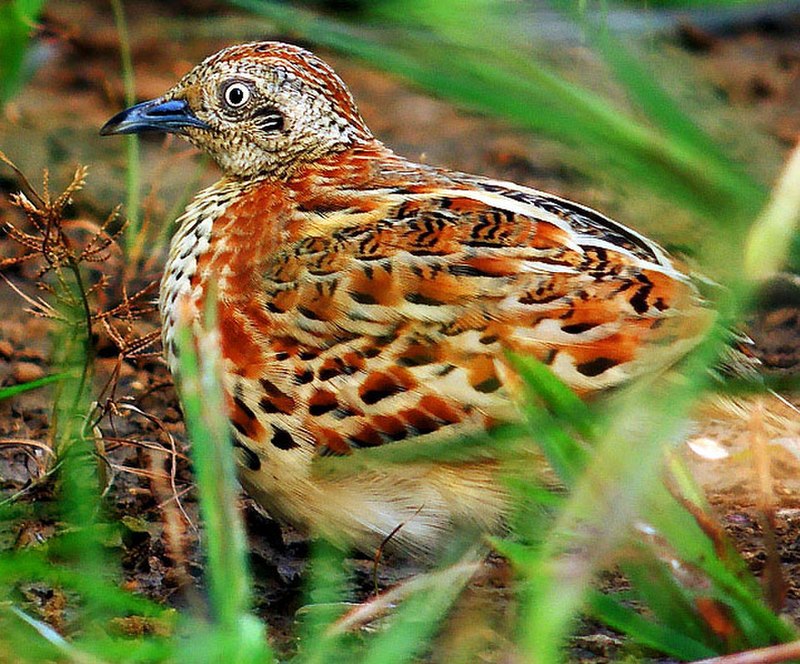
The Barred Buttonquail, known as Turnix suscitator, is a striking presence in Bali’s diverse bird population. It features rufous-brown plumage above with rusty and buff below.
Females, larger and more vivid, exhibit a black throat and breast center. This species stands out with its unique blue-gray bill, legs, and characteristic black barring on the chin, throat, and breast. Observers often note its pale buff shoulder patches visible during flight.
Scientific classification:
| Kingdom | Animalia |
| Phylum | Chordata |
| Class | Aves |
| Order | Charadriiformes |
| Family | Turnicidae |
| Genus | Turnix |
| Species | T. suscitator |
Also Featured In: Singapore Birds,
15. Common Iora
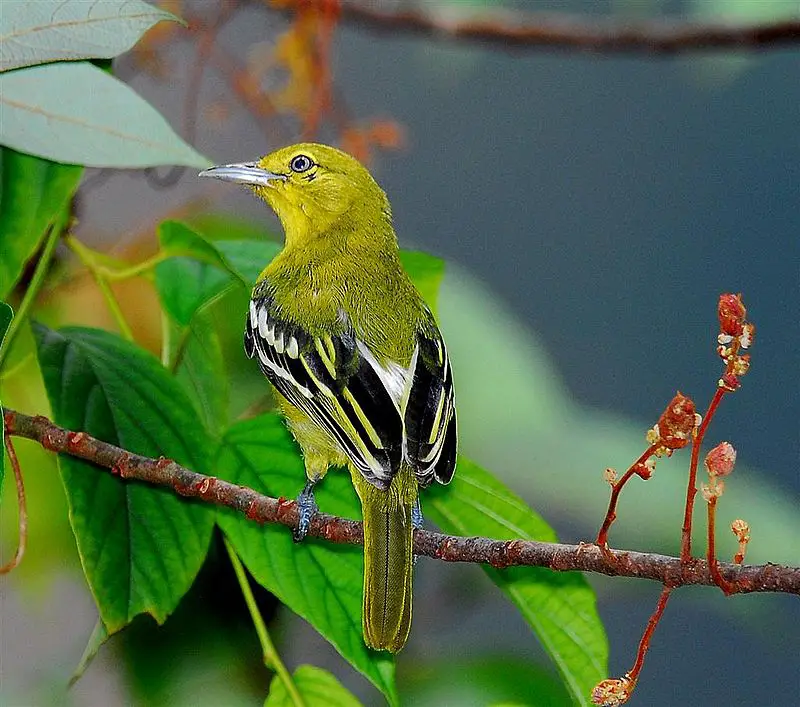
Common Ioras feature pointed and notched beaks with straight culmen. These birds exhibit sexual dimorphism.
Males in breeding season display black caps and backs, contrasting with their black wings and tails. Both sexes have yellow undersides.
Female Ioras have greenish wings and olive tails. The males’ prominent white wing bars highlight their breeding plumage, setting them apart in Bali’s birdlife.
Scientific classification:
| Kingdom | Animalia |
| Phylum | Chordata |
| Class | Aves |
| Order | Passeriformes |
| Family | Aegithinidae |
| Genus | Aegithina |
| Species | A. tiphia |
Also Featured In: Gujarati Birds,
16. Oriental Plover

They observe the Oriental Plover, Anarhynchus veredus, known for its distinctive long legs and elegant stance. This bird finds its habitat in open landscapes, often sandy or grass-covered areas.
It migrates through Bali during its journey between Siberia and Australia. With a unique breeding plumage, the male signals its presence using a bold black band across the chest, contrasting with its pristine white face and underparts.
Scientific classification:
| Kingdom | Animalia |
| Phylum | Chordata |
| Class | Aves |
| Order | Charadriiformes |
| Family | Charadriidae |
| Genus | Charadrius |
| Species | C. veredus |
Also Featured In: Mongolia Birds,
17. Banded Fruit Dove
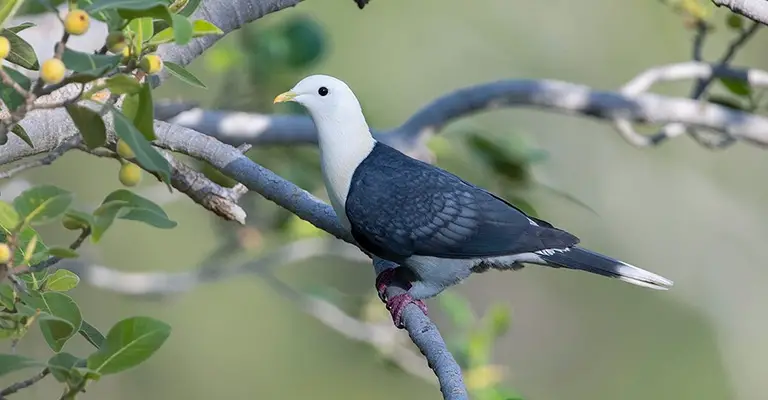
The banded fruit dove exhibits plumage, distinct with its white head and neck. Their black backs merge into gray at the rump, and a broad gray band marks their tails.
Typically averaging 38-44 cm in length, these doves weigh between 450-570 g. They contribute to Bali’s diverse birdlife and attract birdwatchers to the region’s lush landscapes.
Scientific classification:
| Kingdom | Animalia |
| Phylum | Chordata |
| Class | Aves |
| Order | Columbiformes |
| Family | Columbidae |
| Genus | Ptilinopus |
| Species | P. cinctus |
Also Featured In: Timor-Leste birds, Birds that Found in Kakadu National Park
18. Short-Tailed Starling
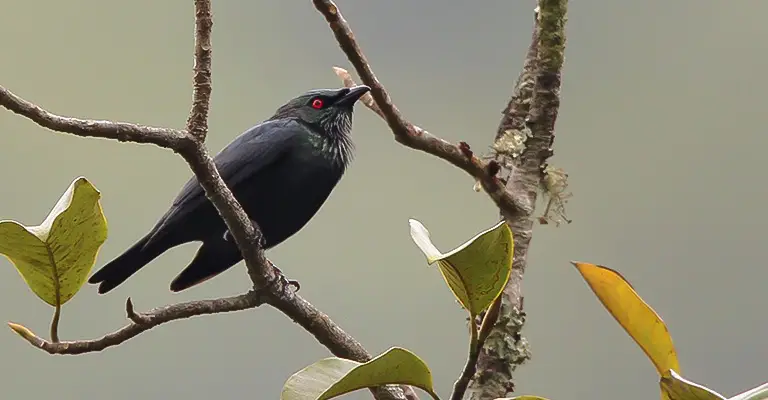
Short-tailed Starlings thrive in Indonesia and the Philippines. They inhabit subtropical or tropical moist lowland and montane forests.
This starling species belongs to the Sturnidae family. Their notable features include adaptability to varied forest environments. Observers often spot them amid dense foliage. These starlings contribute to the rich avian diversity of the region.
Scientific classification:
| Kingdom | Animalia |
| Phylum | Chordata |
| Class | Aves |
| Order | Passeriformes |
| Family | Sturnidae |
| Genus | Aplonis |
| Species | A. minor |
19. Malaysian Pied Fantail
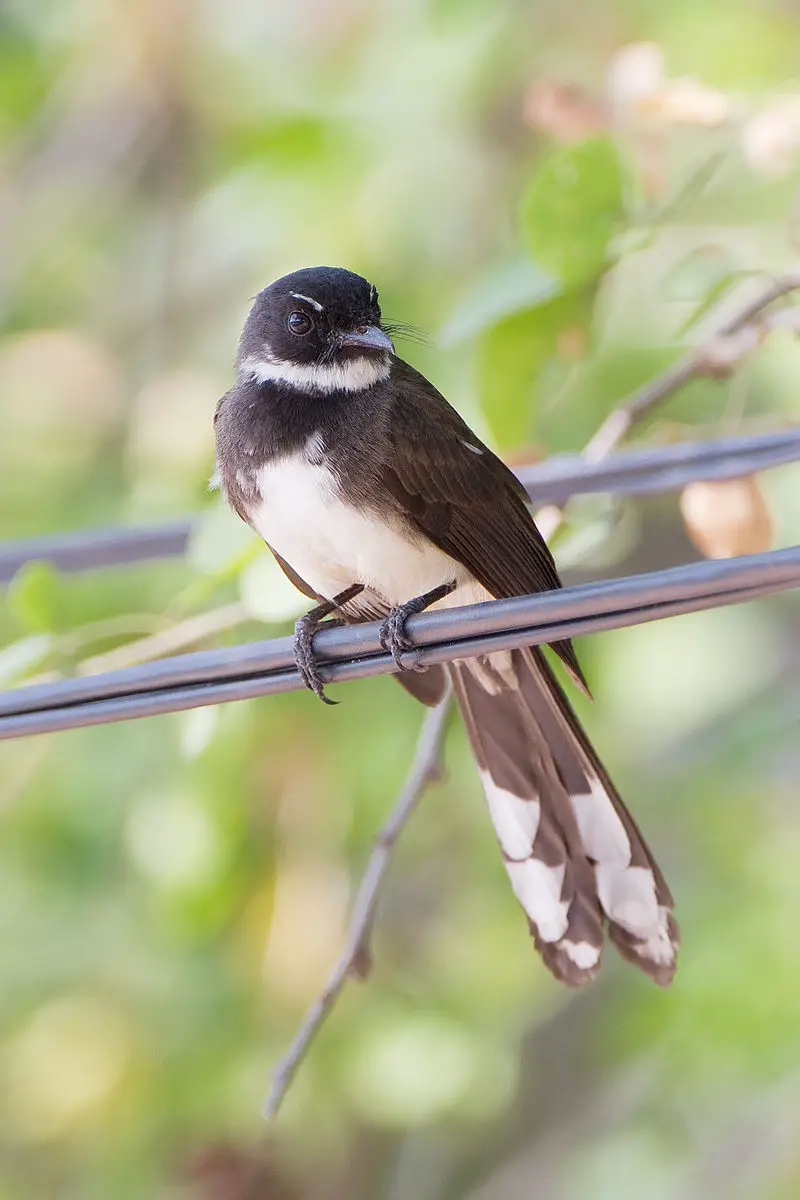
The Malaysian Pied Fantail thrives in lowland forests across Southeast Asia, including Bali. Characterized by its distinctive fan-shaped tail, it adeptly flits through the underbrush.
Observers note its adaptable behavior in various habitats, from garden settings to forest edges. Enthusiasts appreciate its melodic twittering, adding to Bali’s rich soundscape.
The bird’s presence enhances the diverse avian life captivating visitors to the island.
Scientific classification:
| Kingdom | Animalia |
| Phylum | Chordata |
| Class | Aves |
| Order | Passeriformes |
| Family | Rhipiduridae |
| Genus | Rhipidura |
| Species | R. javanica |
Also Featured In: Brunei birds,
20. Java Sparrow
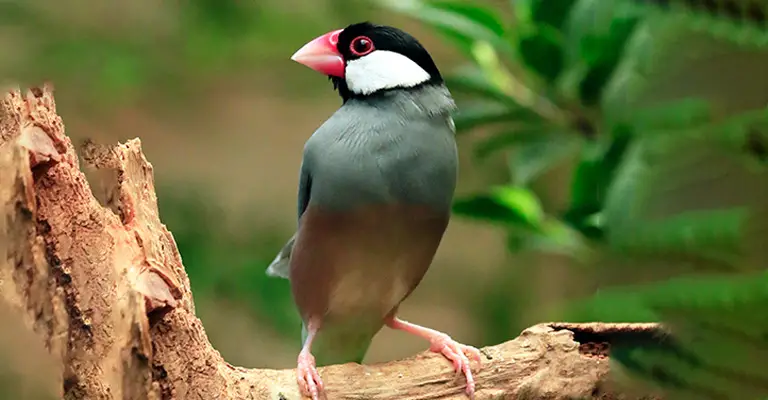
The Java Sparrow, measuring 15 to 17 cm, stands out in Bali’s birdlife. It could be the largest in the estrildid family, with a mean mass of 24.5 g.
Its gray upperparts, pink belly, and distinctive red bill make it unmistakable. Both sexes look alike, but immature birds are brown. They produce trill-calls, varying in repetition rate by context, adding layers to Bali’s soundscape.
Scientific classification:
| Kingdom | Animalia |
| Phylum | Chordata |
| Class | Aves |
| Order | Passeriformes |
| Family | Estrildidae |
| Genus | Padda |
| Species | P. oryzivora |
Also Featured In: Finches Species, Aviary Birds You Should Know
21. Javan Pond Heron
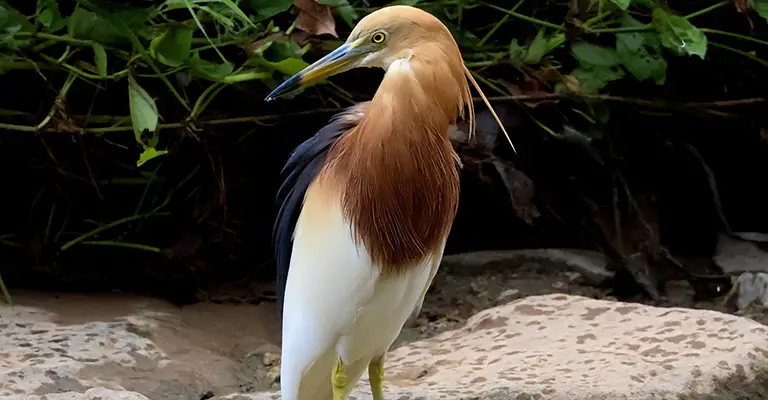
The Javan Pond Heron, a migratory bird, adds to Bali’s diverse bird population from June to September.
This heron measures about 45 cm and features striking plumage: orange, slaty, and white in the mating season and brown with white speckles outside it.
Although similar to Chinese and Indian pond herons, the distinct breeding colors set it apart, especially around Bali’s wetlands.
Scientific classification:
| Kingdom | Animalia |
| Phylum | Chordata |
| Class | Aves |
| Order | Pelecaniformes |
| Family | Ardeidae |
| Genus | Ardeola |
| Species | A. speciosa |
Also Featured In: Herons Species, Common Birds of Lombok
22. Sacred Kingfisher
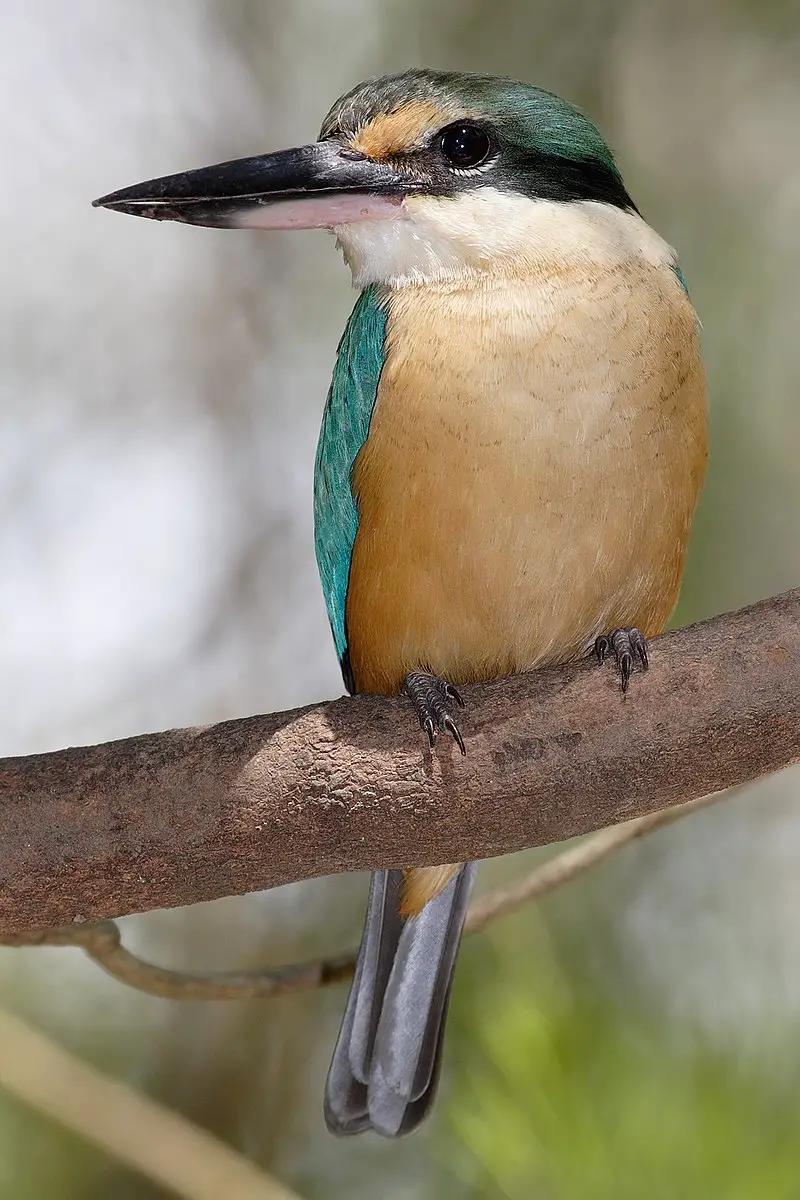
The Sacred Kingfisher in Bali stands out with blue-green to turquoise upperparts. These birds have a distinctive black mask and white collar.
Adult size ranges from about 20 to 23 cm in length. Males average between 28 to 61 grams, while females range from 28 to 56 grams. Often mistaken for the Collared Kingfisher, the Sacred Kingfisher features buffy underparts and fast flight.
Scientific classification:
| Kingdom | Animalia |
| Phylum | Chordata |
| Class | Aves |
| Order | Coraciiformes |
| Family | Alcedinidae |
| Subfamily | Halcyoninae |
| Genus | Todiramphus |
| Species | T. sanctus |
Also Featured In: Kingfishers Species, Birds that Live around Brisbane
23. Javan Kingfisher
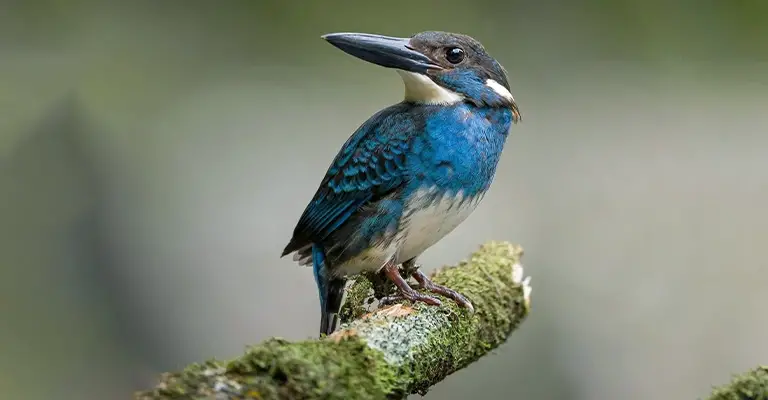
The Javan Kingfisher, a medium-sized bird reaching 25 to 27 cm, features a prominent large red bill. This bird is characterized by a striking purple body and vivid turquoise primary coverts, secondaries, and tail.
Locally, its call is known as cekakakak cekakakak cekakakak, resembling a far-carrying scream. Juveniles present brownish-orange bills and exhibit duller colors compared to adults.
Scientific classification:
| Kingdom | Animalia |
| Phylum | Chordata |
| Class | Aves |
| Order | Coraciiformes |
| Family | Alcedinidae |
| Subfamily | Halcyoninae |
| Genus | Halcyon |
| Species | H. cyanoventris |
Also Featured In: Java Birds You Should Know,
24. Pink-Headed Fruit Dove
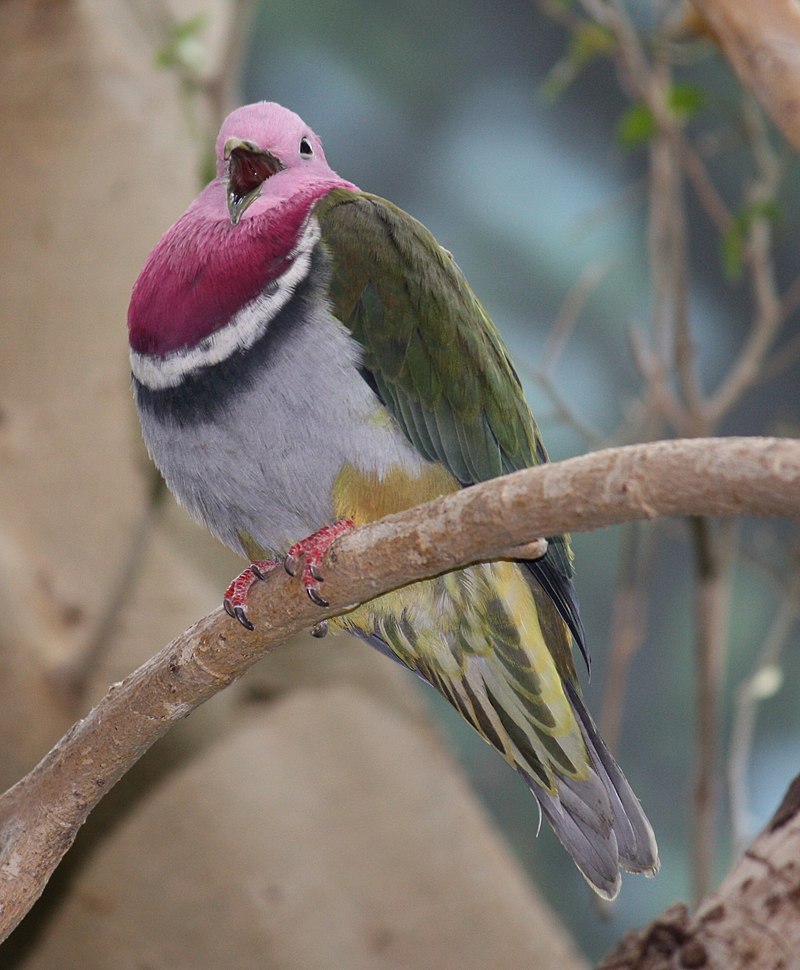
The Pink-Headed Fruit Dove, or Temminck’s fruit pigeon, is a small bird. Endemic to Indonesia, it dwells at altitudes of 1000-2200 meters in mountain forests across Sumatra, Java, and Bali.
Its striking appearance draws birdwatchers to these regions, adding to the allure of Bali’s diverse avian life.
Scientific classification:
| Kingdom | Animalia |
| Phylum | Chordata |
| Class | Aves |
| Order | Columbiformes |
| Family | Columbidae |
| Genus | Ptilinopus |
| Species | P. porphyreus |
Also Featured In: birds of pink, Common Birds of Indonesia
25. Woolly-Necked Stork
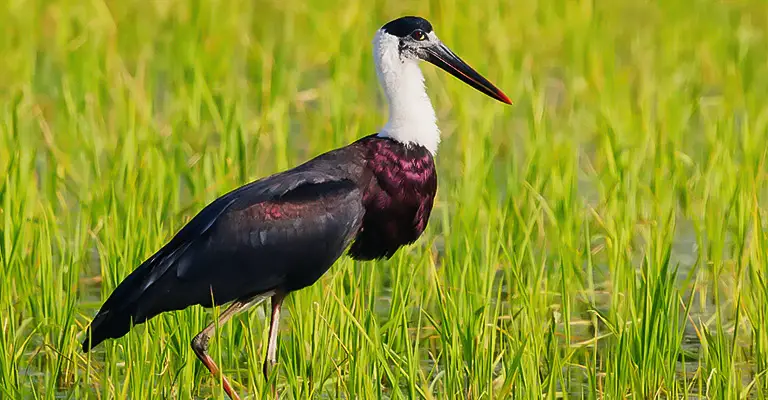
The Woolly-Necked Stork (Ciconia episcopus) thrives in Bali’s marshlands. This large wading bird typically breeds alone or in small colonies.
In Bali, it inhabits various environments, including agricultural areas and freshwater wetlands. Unlike other storks, it displays a preference for forested marshes.
The Woolly-Necked Stork’s unique habitats in Bali make it a prime species for birdwatchers exploring the island’s rich avian biodiversity.
Scientific classification:
| Kingdom | Animalia |
| Phylum | Chordata |
| Class | Aves |
| Order | Ciconiiformes |
| Family | Ciconiidae |
| Genus | Ciconia |
| Species | C. episcopus |
Also Featured In: Birds of Goa, Birds of Karnataka
26. Scarlet-Headed Flowerpecker
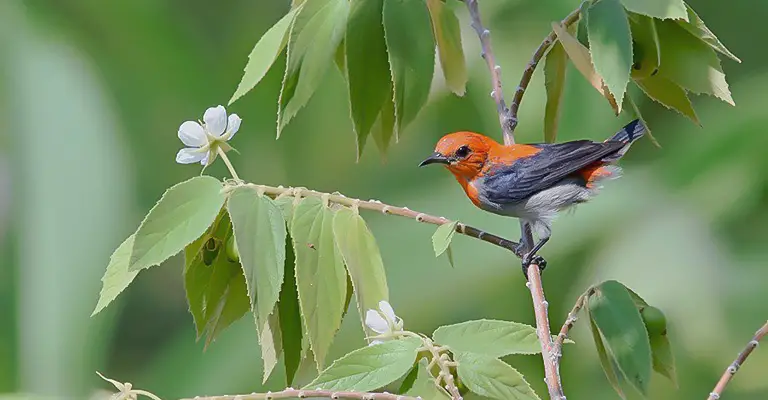
The Scarlet-Headed Flowerpecker displays a striking red to orange plumage on its head, back, rump, and throat.
Males of this species have black wings with a touch of blue, contrasting with their red heads. Females exhibit a light grey to brown hue on the head and back with orange-red rumps. Juveniles resemble females, displaying lighter body colors and small size.
Scientific classification:
| Kingdom | Animalia |
| Phylum | Chordata |
| Class | Aves |
| Order | Passeriformes |
| Family | Dicaeidae |
| Genus | Dicaeum |
| Species | D. trochileum |
27. Bar-Winged Prinia
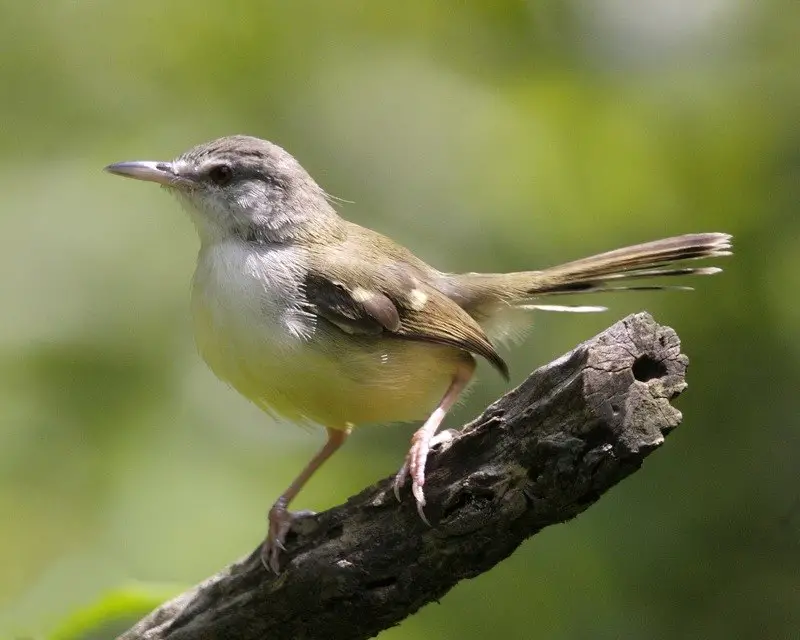
The Bar-Winged Prinia inhabits Indonesia and adds charm to Bali’s diverse avian life. Known as the bar-winged wren-warbler, this bird belongs to the Cisticolidae family.
Its distinct wing pattern and melodious calls attract birdwatchers. Semak Belukar scenes provide a perfect backdrop for observing this species.
These birds are small and display subtle coloration, often blending seamlessly into their environment.
Scientific classification:
| Kingdom | Animalia |
| Phylum | Chordata |
| Class | Aves |
| Order | Passeriformes |
| Family | Cisticolidae |
| Genus | Prinia |
| Species | P. familiaris |
Also Featured In: Birds that Found in Sumatra,
28. Flame-Fronted Barbet
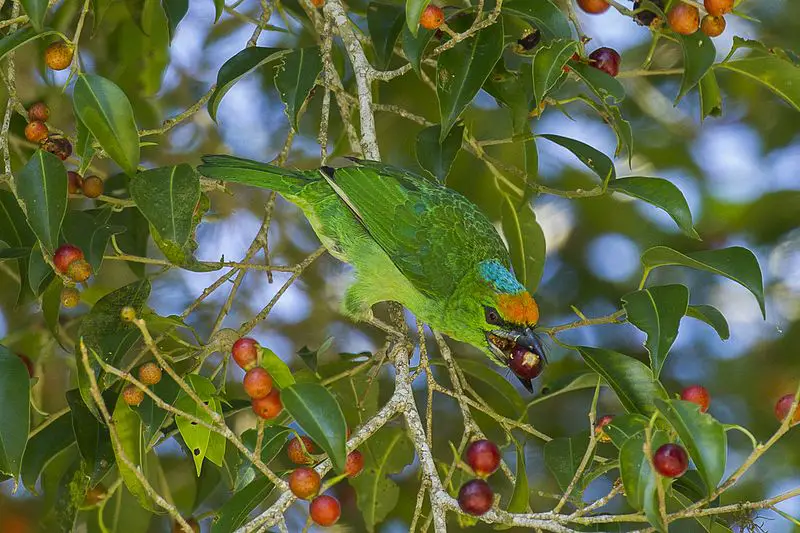
The Flame-Fronted Barbet enchants observers with its a plumage. It displays a prominent flame-colored head and streaked yellow-green body.
Found primarily in Bali, this barbet thrives in lush, tropical landscapes. Feeding mainly on fruits, it plays a vital role in seed dispersal. Birdwatchers cherish spotting this colorful avian species in its natural forest habitat.
Scientific classification:
| Kingdom | Animalia |
| Phylum | Chordata |
| Class | Aves |
| Order | Piciformes |
| Family | Megalaimidae |
| Genus | Psilopogon |
| Species | P. armillaris |
29. White-Headed Munia
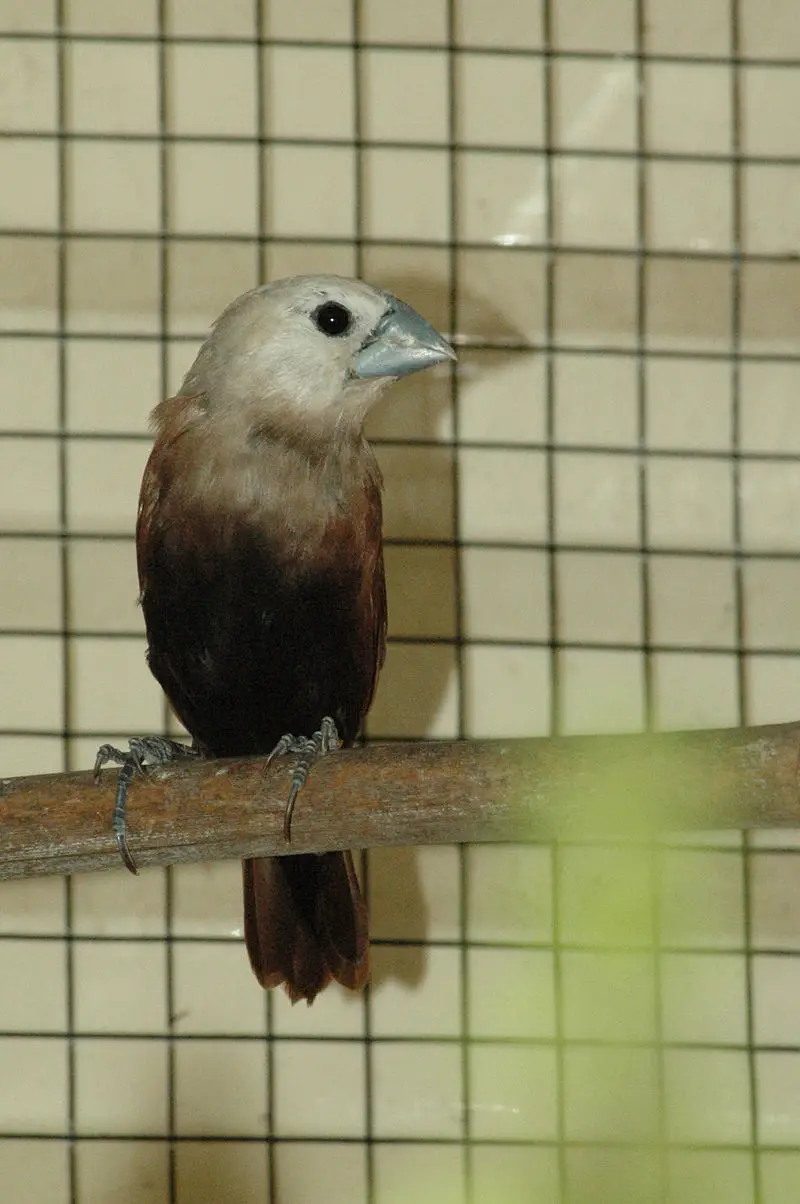
The White-Headed Munia, a distinctive finch, often draws attention in Bali. Small in size, this bird measures around 11 cm. It features a striking combination of pale brown plumage and a white head and throat.
Young birds display a buff face with brown upperparts. This species is often confused with the Chestnut Munia but presents a paler appearance.
Their high-pitched ‘pee-pee’ call is a common sound in Bali’s soundscape, enhancing the island’s avian diversity.
Scientific classification:
| Kingdom | Animalia |
| Phylum | Chordata |
| Class | Aves |
| Order | Passeriformes |
| Family | Estrildidae |
| Genus | Lonchura |
| Species | L. maja |
30. Javan Whistling Thrush
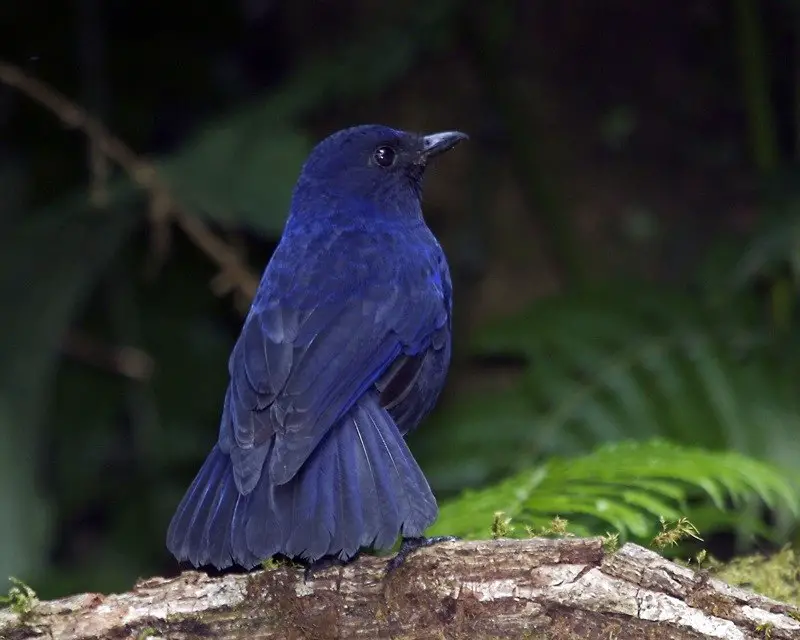
The Javan Whistling Thrush inhabits the montane and foothill forests of Java and Bali, thriving at elevations between 800 and 2400 meters.
It features a chunky dark blue body with the brightest hue on the nape and shoulders. This species favors rocky outcrops and can often be found near water. Endemic to the region, it displays a dark bill, distinguishing it from other thrushes.
Scientific classification:
| Kingdom | Animalia |
| Phylum | Chordata |
| Class | Aves |
| Order | Passeriformes |
| Family | Muscicapidae |
| Genus | Myophonus |
| Species | M. glaucinus |
31. Javan Munia
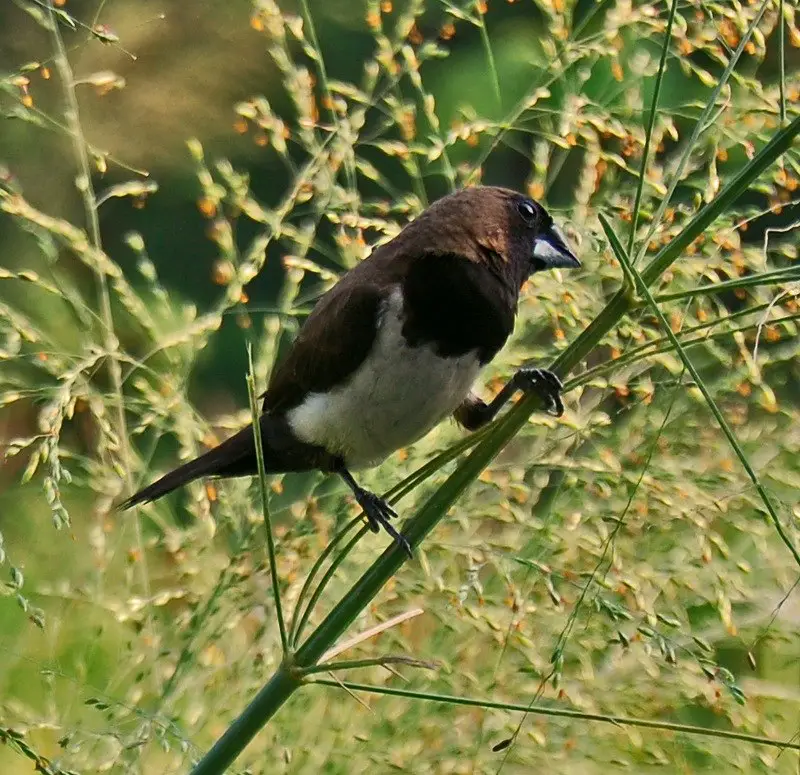
The Javan Munia, native to southern Sumatra, Java, Bali, and Lombok, shows its charm in Bali’s landscapes.
This estrildid finch prefers subtropical and tropical dry shrubland as well as grassland habitats. Sightings often occur near grasslands, making it a favorite among birdwatchers.
Considered Least Concern by the IUCN, the Javan Munia adds resilience and diversity to Bali’s avian population.
Scientific classification:
| Kingdom | Animalia |
| Phylum | Chordata |
| Class | Aves |
| Order | Passeriformes |
| Family | Estrildidae |
| Genus | Lonchura |
| Species | L. leucogastroides |
32. Orange-Spotted Bulbul
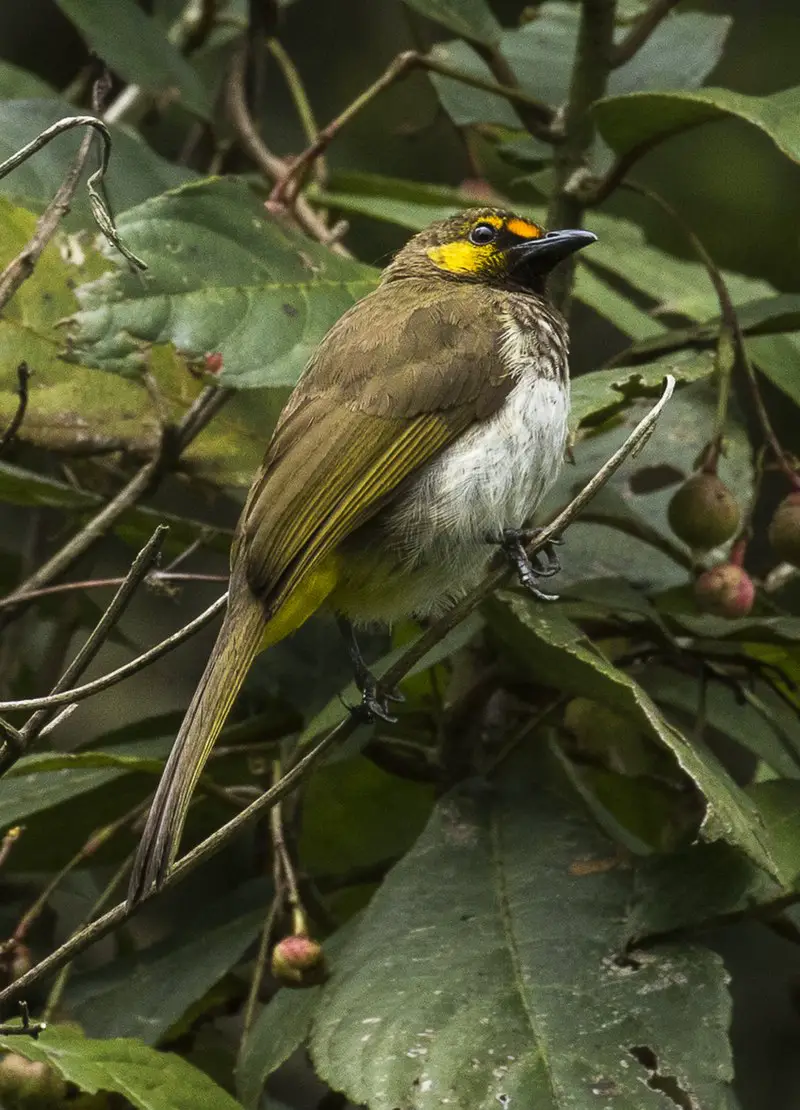
The Orange-Spotted Bulbul, known scientifically as Pycnonotus bimaculatus, adds a splash of color to Bali’s avian collection.
This species reaches up to 20 cm in length and draws attention with its distinctive dark coloration and rounded tail.
Its active nature and bold presence make it a favorite among bird enthusiasts. In Bali’s lush environment, this bulbul thrives, contributing significantly to the island’s diverse bird population.
Scientific classification:
| Kingdom | Animalia |
| Phylum | Chordata |
| Class | Aves |
| Order | Passeriformes |
| Family | Pycnonotidae |
| Genus | Pycnonotus |
| Species | P. bimaculatus |
33. Crescent-Chested Babbler
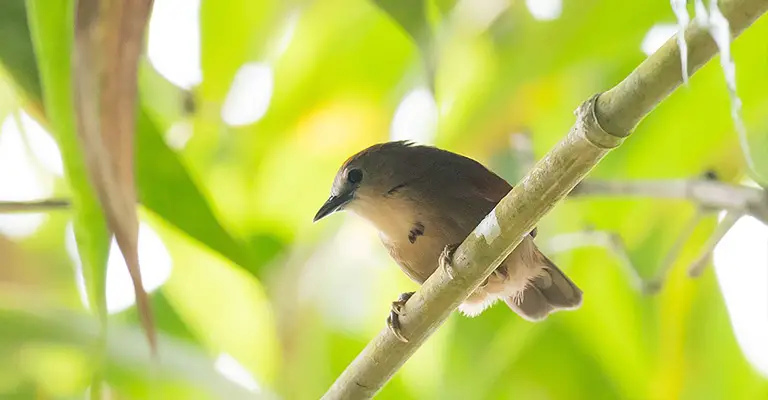
The Crescent-Chested Babbler, a member of the Timaliidae family native to Java and Bali, thrives in Indonesia’s lush environments.
This bird species inhabits subtropical and tropical moist lowland forests, thriving in montane forests and shrublands.
Although listed as Least Concern on the IUCN Red List, its presence contributes significantly to the biodiversity of Bali, attracting birdwatchers eager to spot its unique characteristics in the wild.
Scientific classification:
| Kingdom | Animalia |
| Phylum | Chordata |
| Class | Aves |
| Order | Passeriformes |
| Family | Timaliidae |
| Genus | Cyanoderma |
| Species | C. melanothorax |
34. Black-Naped Fruit Dove
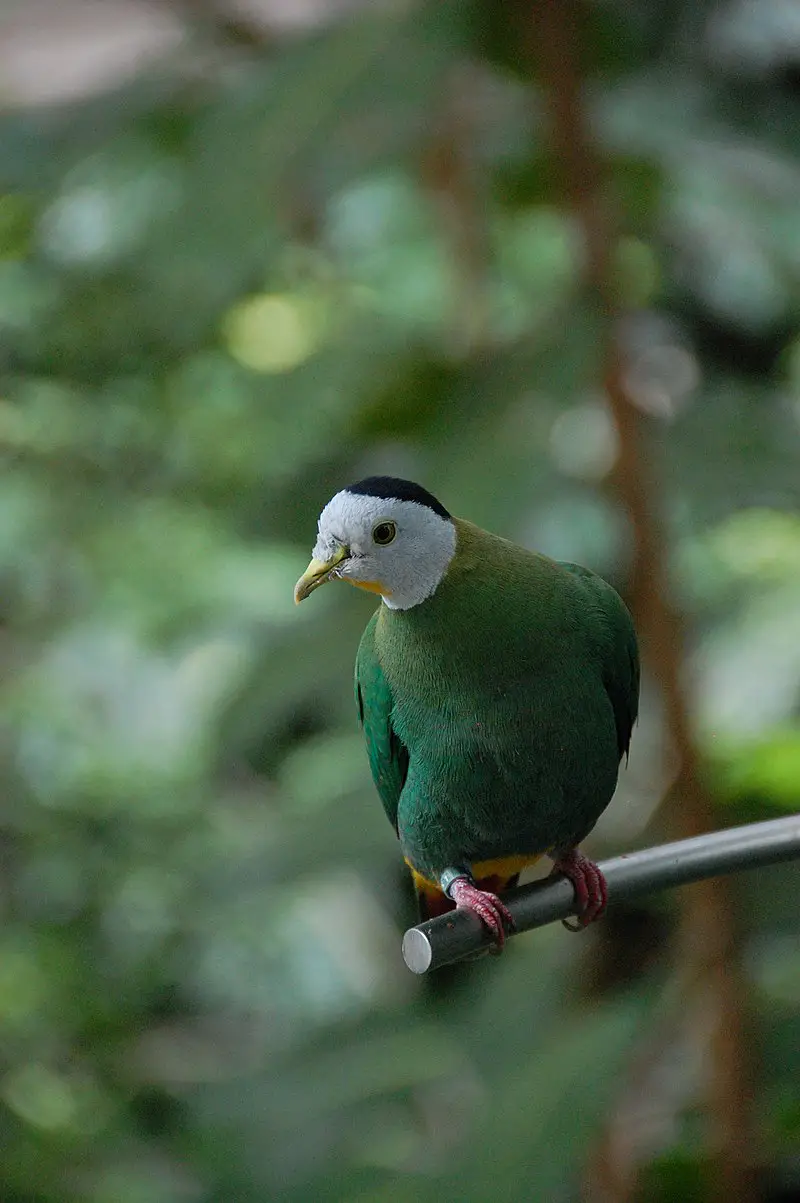
The Black-Naped Fruit Dove is striking with its plumage. Found throughout Bali, this medium-sized bird measures about 24 cm.
The male features a pale grey head, contrasting elegantly with a black nape. It dazzles with a yellow throat and golden yellow and pink undertail coverts.
This distinct coloring makes the Black-Naped Fruit Dove a standout species among Bali’s birdlife.
Scientific classification:
| Kingdom | Animalia |
| Phylum | Chordata |
| Class | Aves |
| Order | Columbiformes |
| Family | Columbidae |
| Genus | Ptilinopus |
| Species | P. melanospilus |
Also Featured In: Palawan Island Birds, Birds in Sumba
35. Black-Winged Myna

The Black-Winged Myna, native to Bali, Indonesia, displays striking plumage featuring a white head and glossy black wings. Measuring around 23 cm in length, it captivates birdwatchers with its vivid contrast.
Its yellow eye skin and bill accentuate the myna’s appearance. Bali Barat National Park, a key habitat, offers a glimpse of this rare species. Juveniles feature a distinct gray crown and back, adding to its allure.
Scientific classification:
| Kingdom | Animalia |
| Phylum | Chordata |
| Class | Aves |
| Order | Passeriformes |
| Family | Sturnidae |
| Genus | Acridotheres |
| Species | A. melanopterus |
36. Streaked Weaver
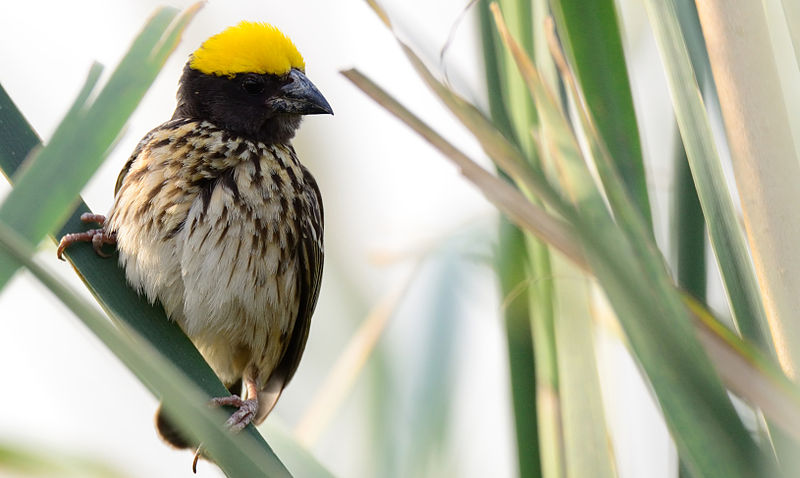
The Streaked Weaver thrives across South and Southeast Asia. It has breeding plumage and intricate nests. Bali’s marshlands and rice paddies provide ideal habitats.
Birdwatchers find these areas appealing due to the weaver’s social nature during nesting seasons. This species enhances Bali’s avian diversity, complementing its rich ecosystems
Scientific classification:
| Kingdom | Animalia |
| Phylum | Chordata |
| Class | Aves |
| Order | Passeriformes |
| Family | Ploceidae |
| Genus | Ploceus |
| Species | P. manyar |
37. Striated Swallow
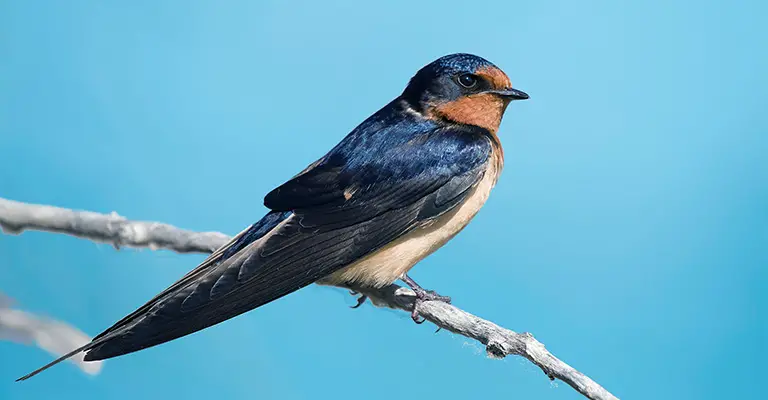
The striated swallow, measuring 19 cm, showcases a deeply forked tail and blue upperparts. Distinguished by a reddish collar and streaked chestnut rump, it inhabits regions like Taiwan and Indonesia.
This swallow’s white face and heavily streaked underparts add to its striking appearance. Four races exist, with C. s. striolata and C. s. mayri being prominent. Its calls vary from a soft twittering song to alarm “chichichi” sounds.
Scientific classification:
| Kingdom | Animalia |
| Phylum | Chordata |
| Class | Aves |
| Order | Passeriformes |
| Family | Hirundinidae |
| Genus | Cecropis |
| Species | C. striolata |
Also Featured In: Most Common Birds in Negros,
38. Javan Owlet
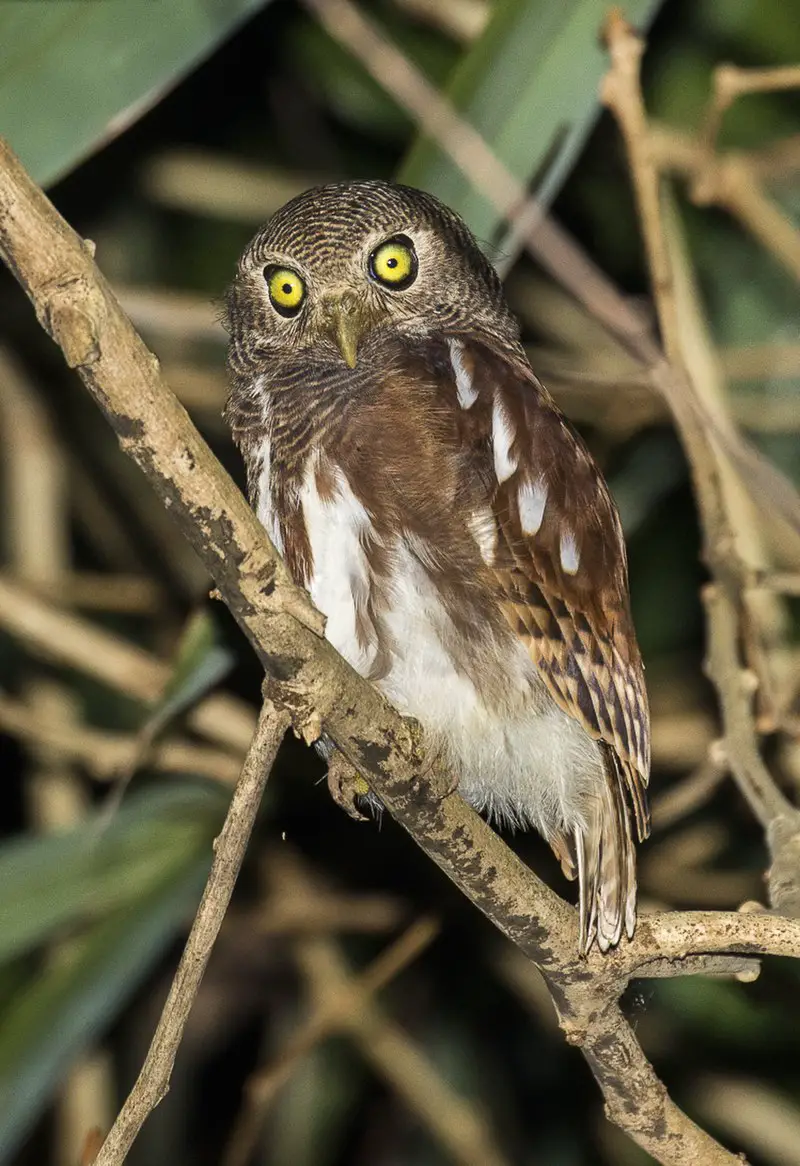
The Javan Owlet is a species residing in the lush regions of Java and Bali. This owl thrives within subtropical or tropical moist lowland forests. Known for their distinctive calls, Javan Owlets are a significant part of the local ecosystem.
Bird enthusiasts find them intriguing due to their elusive nature. These owlets contribute to the rich avian tapestry of Bali, drawing attention from visitors and scientists alike.
Scientific classification:
| Kingdom | Animalia |
| Phylum | Chordata |
| Class | Aves |
| Order | Strigiformes |
| Family | Strigidae |
| Genus | Glaucidium |
| Species | G. castanopterum |
39. Fulvous-Chested Jungle Flycatcher
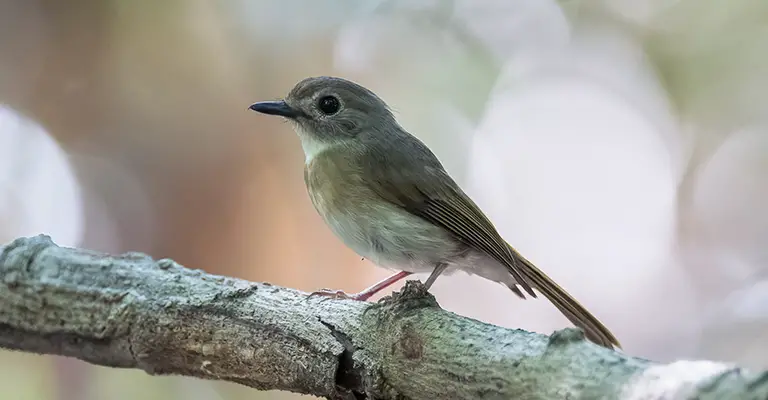
The Fulvous-Chested Jungle Flycatcher, part of the Old World flycatcher family, thrives in subtropical and tropical forests.
This species, Cyornis olivaceus, is native to regions including Myanmar, Thailand, and Indonesia. Known for its olive coloration, it primarily inhabits moist lowland areas.
Previously classified under Rhinomyias, molecular studies led to its reclassification. Enthusiasts find this flycatcher’s unique habitat and distribution appealing for observation.
Scientific classification:
| Kingdom | Animalia |
| Phylum | Chordata |
| Class | Aves |
| Order | Passeriformes |
| Family | Muscicapidae |
| Genus | Cyornis |
| Species | C. olivaceus |
40. Brown-Throated Sunbird
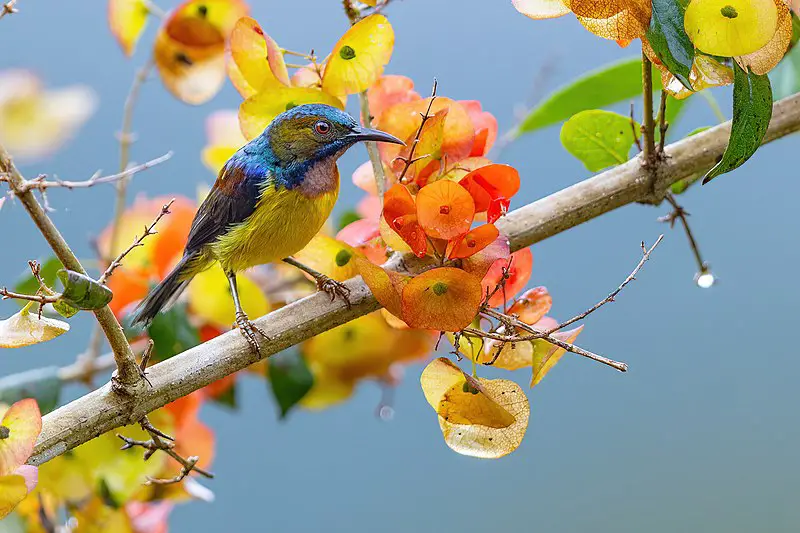
The brown-throated sunbird stands out as a relatively large member of the sunbird family. Measuring around 14 centimeters, it exhibits a mass range of 7.4 to 13.5 grams.
Males display iridescent green and purple upperparts with chestnut markings, enhancing their mostly yellow underparts. Females present a contrasting olive-green above and yellowish below appearance.
Scientific classification:
| Kingdom | Animalia |
| Phylum | Chordata |
| Class | Aves |
| Order | Passeriformes |
| Family | Nectariniidae |
| Genus | Anthreptes |
| Species | A. malacensis |
Also Featured In: Birds that Live in Kuala Lumpur, HDB Approved by Birds
41. Yellow-Throated Hanging Parrot
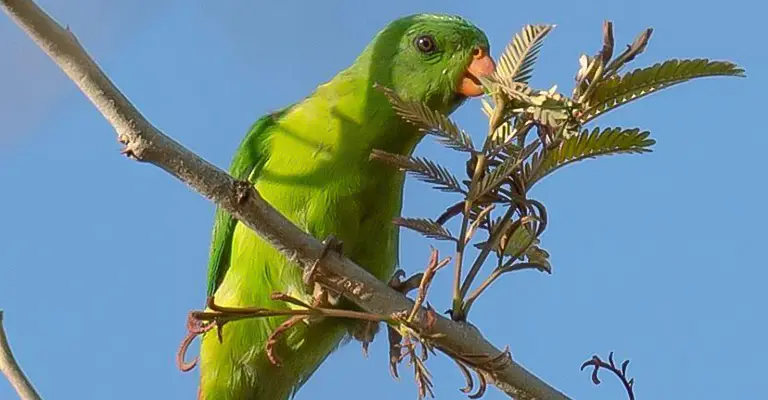
The Yellow-Throated Hanging Parrot (Loriculus pusillus) adds a touch to Bali’s avian life. This small green parrot flaunts a yellow throat and red lower back, inhabiting the lush forests of Java and Bali.
However, it faces threats from habitat loss in these regions. Birdwatchers enjoy spotting this striking species, especially when it perches in sunlit treetops, highlighting its vivid colors.
Scientific classification:
| Kingdom | Animalia |
| Phylum | Chordata |
| Class | Aves |
| Order | Psittaciformes |
| Family | Psittaculidae |
| Genus | Loriculus |
| Species | L. pusillus |
42. Grey-Rumped Treeswift
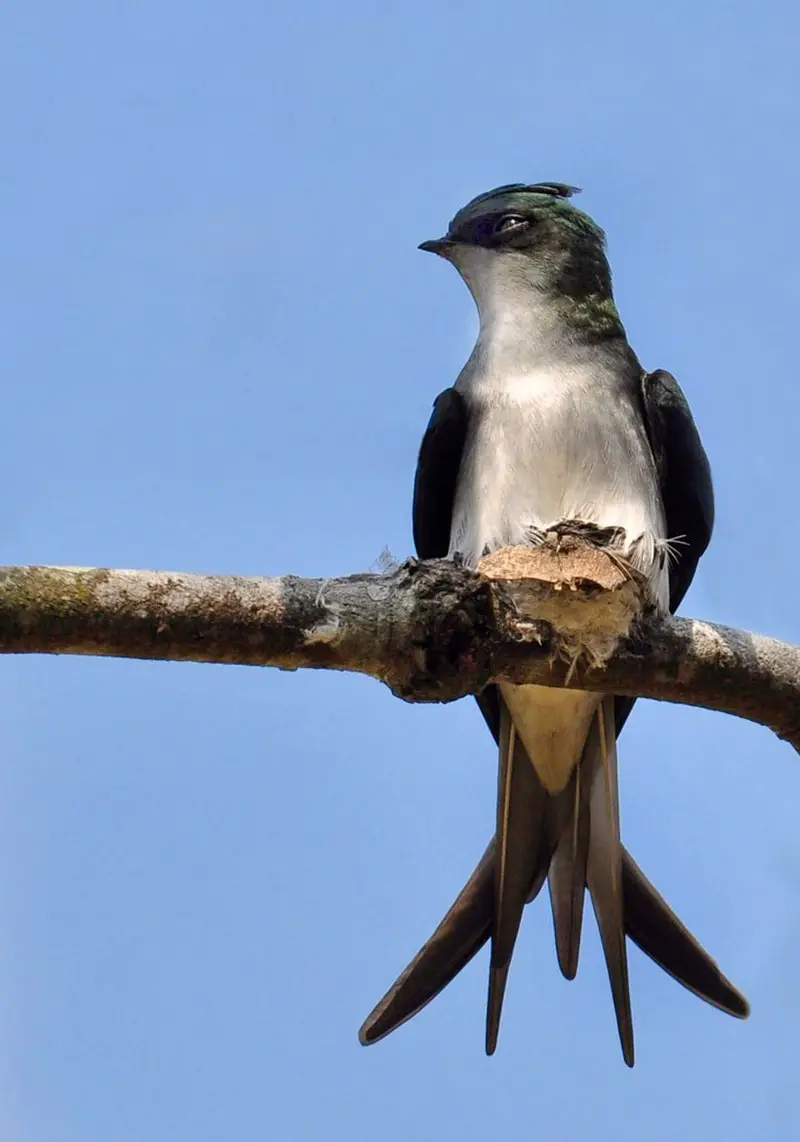
The Grey-Rumped Treeswift, known for its graceful flight, delights birdwatchers in Bali. Its greenish sheen glistens as it moves through the sky.
Observers often find this bird soaring overhead, captivating onlookers with its rhythmic patterns. Sightings of the Grey-Rumped Treeswift frequently occur during neighborhood walks.
The bird’s presence enriches Bali’s diverse avian landscape, attracting enthusiasts who appreciate its dynamic display.
Scientific classification:
| Kingdom | Animalia |
| Phylum | Chordata |
| Class | Aves |
| Clade | Strisores |
| Order | Apodiformes |
| Family | Hemiprocnidae |
| Genus | Hemiprocne |
| Species | H. longipennis |
43. Dark-Backed Imperial Pigeon
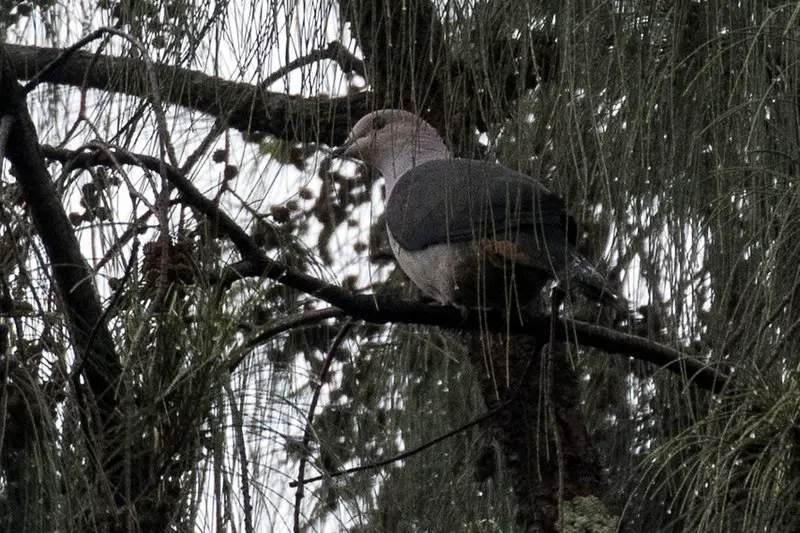
The Dark-Backed Imperial Pigeon, endemic to the Lesser Sunda Islands, thrives in Bali’s montane forests.
Its preferred habitats include subtropical and tropical moist lowland areas. Known scientifically as Ducula lacernulata, this pigeon forms part of the Columbidae family.
Birdwatchers often find it in lush environments, offering a distinctive presence among Bali’s diverse avian species.
Scientific classification:
| Kingdom | Animalia |
| Phylum | Chordata |
| Class | Aves |
| Order | Columbiformes |
| Family | Columbidae |
| Genus | Ducula |
| Species | D. lacernulata |
44. Lesser Shortwing
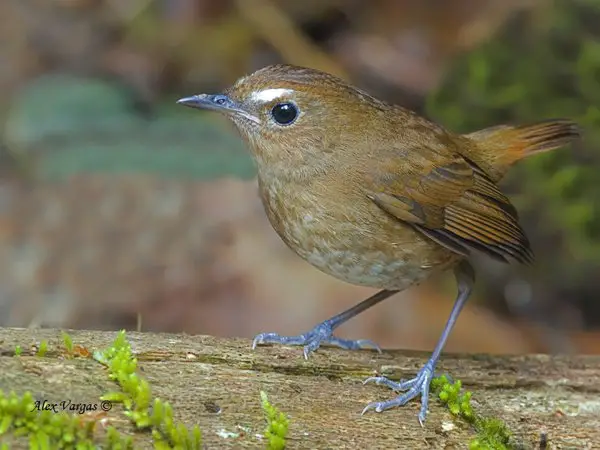
The Lesser Shortwing resides in Bali’s dense cover near moving water. Both sexes appear brown or gray, with distinctive white eyebrows and throats.
Its elusive nature makes it tough to spot, yet its song—a melodic sequence beginning with slow notes—often betrays its presence.
Birdwatchers seek this ground-hugging bird, appreciating its unique auditory charm amidst Bali’s rich avian diversity.
Scientific classification:
| Kingdom | Animalia |
| Phylum | Chordata |
| Class | Aves |
| Order | Passeriformes |
| Family | Muscicapidae |
| Genus | Brachypteryx |
| Species | B. leucophris |
Also Featured In: Wetar Island Birds You Need to Know,
Conclusion
Bali’s birdlife offers an unparalleled experience for birdwatchers and nature enthusiasts alike.
The island’s diverse avian population, from the striking Black-Naped Fruit Dove to the elusive Lesser Shortwing, showcases the rich tapestry of species that thrive in its unique habitats.
Despite challenges like the illegal cagebird trade, Bali remains a sanctuary for these feathered wonders.
The island’s commitment to conservation and the allure of its natural beauty continue to draw visitors, ensuring that Bali remains a must-visit destination for those eager to witness its avian marvels in their natural environment.